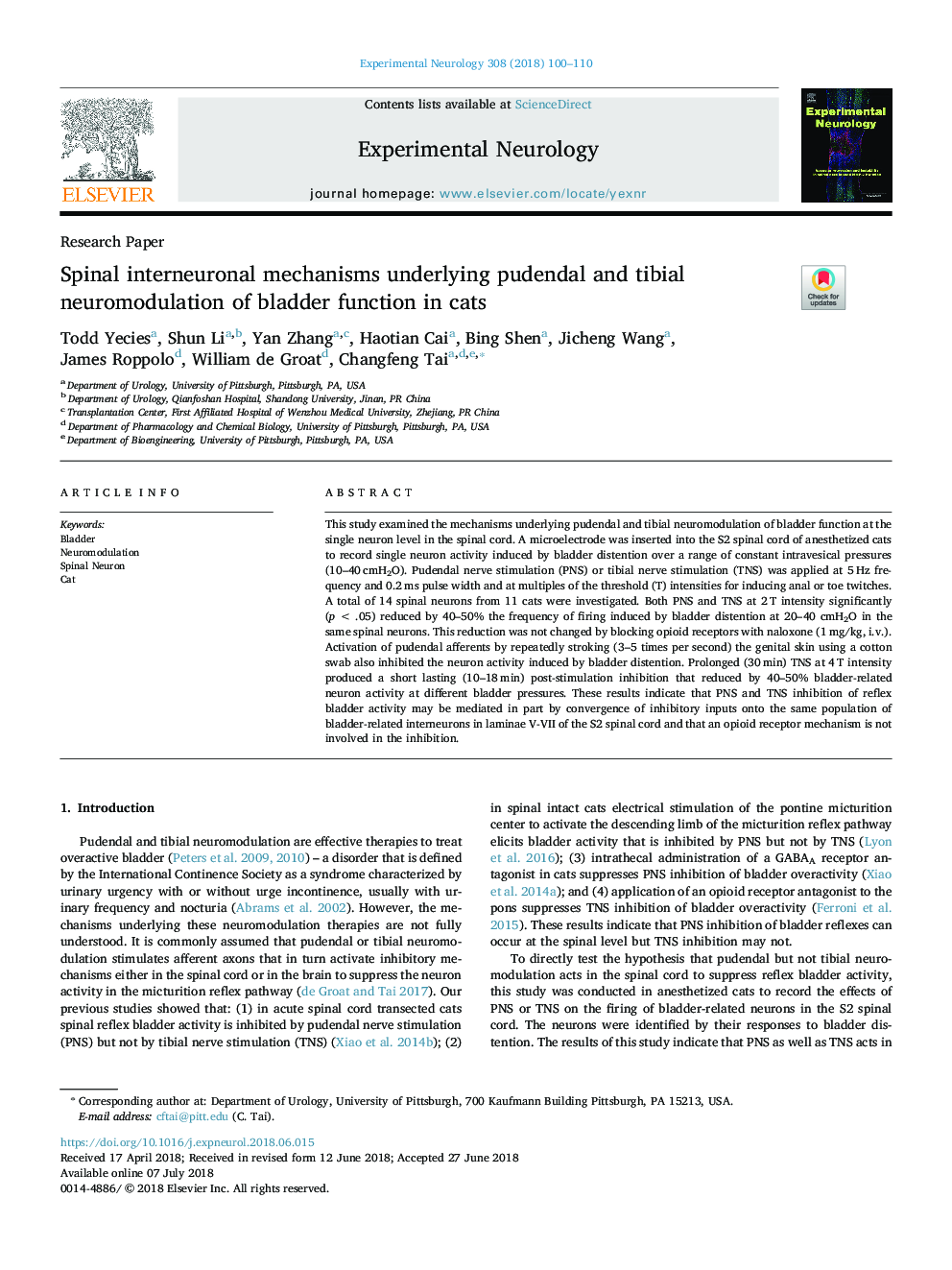| Article ID | Journal | Published Year | Pages | File Type |
|---|---|---|---|---|
| 8684542 | Experimental Neurology | 2018 | 11 Pages |
Abstract
This study examined the mechanisms underlying pudendal and tibial neuromodulation of bladder function at the single neuron level in the spinal cord. A microelectrode was inserted into the S2 spinal cord of anesthetized cats to record single neuron activity induced by bladder distention over a range of constant intravesical pressures (10-40â¯cmH2O). Pudendal nerve stimulation (PNS) or tibial nerve stimulation (TNS) was applied at 5â¯Hz frequency and 0.2â¯ms pulse width and at multiples of the threshold (T) intensities for inducing anal or toe twitches. A total of 14 spinal neurons from 11 cats were investigated. Both PNS and TNS at 2â¯T intensity significantly (pâ¯<â¯.05) reduced by 40-50% the frequency of firing induced by bladder distention at 20-40 cmH2O in the same spinal neurons. This reduction was not changed by blocking opioid receptors with naloxone (1â¯mg/kg, i.v.). Activation of pudendal afferents by repeatedly stroking (3-5 times per second) the genital skin using a cotton swab also inhibited the neuron activity induced by bladder distention. Prolonged (30â¯min) TNS at 4â¯T intensity produced a short lasting (10-18â¯min) post-stimulation inhibition that reduced by 40-50% bladder-related neuron activity at different bladder pressures. These results indicate that PNS and TNS inhibition of reflex bladder activity may be mediated in part by convergence of inhibitory inputs onto the same population of bladder-related interneurons in laminae V-VII of the S2 spinal cord and that an opioid receptor mechanism is not involved in the inhibition.
Related Topics
Life Sciences
Neuroscience
Neurology
Authors
Todd Yecies, Shun Li, Yan Zhang, Haotian Cai, Bing Shen, Jicheng Wang, James Roppolo, William de Groat, Changfeng Tai,
